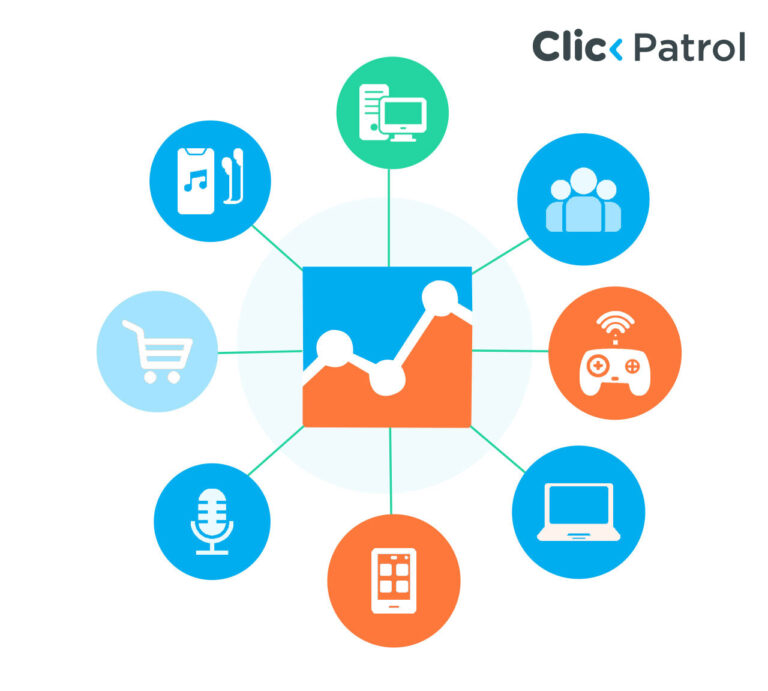
What Are Click Fraud Bots And How Do They Operate?
Abisola Tanzako | Dec 18, 2022

Bots are software programs designed to carryout routine operations continuously.
Table of Contents
Siri and the likes are good instances of bots that make life easier. However, numerous bots also replicate human actions to commit fraud.
Bots are typically straightforward software configured to complete a specific activity.
The primary purpose of click fraud bots is to generate fraudulent website traffic—just a series of clicks in a pattern.
When a bot visits a website and clicks on an ad, an icon, or another sort of hyperlink (obviously with no intention to purchase anything), it is said to engage in click fraud.
The purpose of click fraud bots is to deceive a website or service into believing that genuine people are interacting with ads or a webpage.
Digital marketers are more conscious of the need to prevent click fraud on their PPC ads, caused by an increase in the prevalence of the issue of click fraud, fraudulent clicks, and invalid traffic. This is not surprising given the billions or more wasted to click fraud each year with the use of click fraud bots.
What Are Click Fraud Bots?
Click fraud bots are programs or codes designed and created to carry out click fraud activities. Some bots may open a specific web page and click the specified link.
These are the most straightforward bots to identify because it is easy to tell them apart from real people.
More sophisticated bots will simulate user activity by moving their pointer controls and indicators, pausing, spending longer on pages, and randomly choosing how long they spend on each page. These bots are significantly more challenging to locate because of their human-like behaviors.
Several devices are used in click fraud campaigns, considering that it would be evident if many clicks originated from a single device. Given that devices have separate IP addresses, the users may be recognized easily.
The main purpose of click fraud bots is to allow the fraudster to profit financially from ad clicks and (sometimes) video engagements on the advertisements that are hosted on a webpage. Meanwhile, your advertising campaign is paying for squandered impressions.
These bots are essentially Trojan horse malware frequently planted on several devices and servers.
They can be used as a network component to click on several ads when implanted repeatedly. They could also use targeted click fraud, such as click spamming or injections.
How Click Fraud Bots Operate
Generally, click fraud bots are a great and easy way for fraudsters to make money. Advertisers use ad networks to discover publishers whose networks appeal to particular target audiences, place their advertisements there, and wait for clicks from those audiences.
This is where click fraud or fraudsters enter the picture and take advantage. The secret lies in the model as a whole, which is based on measures that are simple to interfere with and are dependent upon clicks.
Fraudsters use click bots to carry out click fraud by installing bots on several devices, computer servers, or cloud providers. They also place adverts on their subpar apps or web pages, while directing their bots to click on as many advertising, websites, and subpages as possible.
These fraudsters subsequently collect the revenue for the paid-ad clicks.
Ad campaigns frequently span several months, making it easy and fast to accumulate thousands of clicks. The advertiser who thinks they are paying for actual clicks incurs charges for each one of these budgets.
These clicks are generic indicators of an engagement on a specific content that occurred, as opposed to conversions and other on-site actions that might or might not result in potential opportunities for conversions. This makes click fraud bots simple to induce.
Who Is Behind Click Fraud Bots
Competitors and publishers/affiliates are typically the two categories of persons who commit click fraud. However, Anyone with a background in programming may construct and use click bots because they are so simple to make. In reality, bots are one of the most prevalent forms of ad fraud, generating up to 40% of all internet traffic.
Numerous actors use click bots, and none have good motives, similar to most ad fraud kinds (click fraud bots).
Competitors
Competitors that know you won’t receive a return on your investment will quickly use click bots to click on your advertising and continually drain your budget. This is especially typical in extremely competitive ad marketplaces and should be considered.
Competitors aim to ruin digital advertising marketing initiatives of their rivals and incur as much financial loss as possible. Competitor click fraud bots are made expressly to sabotage your business. It could be a loud declaration or covert sabotage. In each case, its primary objective is to cause serious damage rather than drain the campaign’s finances.
Ad Publishers and Affiliates
Click affiliates and ad publishers use bots to enhance traffic and income, this practice is referred to as Inflationary Click fraud and it is one of the most sophisticated Click Fraud cases. In this instance, the working system is parasitized by the con artists. Their goal is to steal as much money as they can without being seen or blocked out.
They do this to collect payments for click-throughs on the advertisements because publishers and affiliates are incentivized to maintain a high click-through rate. Ads employing the PPC revenue model frequently use this. They pose a more significant threat to your campaigns the more organized and sophisticated they are (e.g., by using a larger network).
The special case of Disgruntled Former Employees:
A small percentage of click fraud is attributed to disgruntled former employees and customers4. This has gained more attention over time and is starting to become a concern for business owners.
In the past, there was news about disgruntled French workers inserting their wooden shoes (sabots) into machines to obstruct or sabotage’ them. Today, disgruntled employees are powerful enough to sabotage your business operations simply with the click of a button .
Botnet Click Campaigns
Botnet click campaigns are the most efficient way to target many pay-per-click ads by infecting computers connected to the internet with malware and using them to click on ads without the knowledge of the owners of these computers under the control of a botmaster.
They are used by network owners who wish to inflate traffic, competitors who wish to spy on their rivals and inflate their ad spending and aggrieved and disgruntled employees looking for payback.
How To Prevent Click Bots
Fraudulent accounts, including click-bots, are to blame for a significant portion of advertising budget loss on Google, Instagram and Facebook.
However, It’s straightforward to alert a server to cease providing the IP address associated with a particular device ads when it generates many fake clicks. Advanced click bots with human-like activities are the issue.
Although you can’t stop all click fraud bots, you can reduce the risk to your website by taking some simple security precautions. Here are a few actions:
- Look into the origins of your traffic and keep an eye out for spikes in it; unusual traffic increases are a sure sign that click fraud bots are at work. Keep an eye on the traffic to your website so you can identify any click-fraud bot attempts and blacklist any responsible IP addresses.
- Aim more precisely: Your chances of attracting various click bots increase with the size of your target. Sometimes, you can reduce the likelihood that click fraud bots will target your ads by narrowing down the areas or nations you wish to concentrate on. Limiting the reach of your adverts also lessens their vulnerability to click fraud bots. Ads displayed outside your time zone are more likely to draw click fraud bots.
- Examine the websites and applications where your advertisements are placed to see how well-designed they are. Web pages that are of low quality and have a lot of pop-ups and display ads are likely made with click fraud bots in mind.
- Keep a close eye on your API connections because they can be exposed to click fraud bots attacks if you utilize them to transfer data between and within your website. Use the latest API version, and erase any stale links from your website.
To tackle more advanced click fraud bots, you need to use click fraud protection software. Particularly one with advanced AI such as ClickPatrol.
ClickPatrol monitors and screens every click on your ad, analysing them for at least 800 IP and fingerprint characteristics. Therefore proactively detecting and blocking Click fraud bots.





